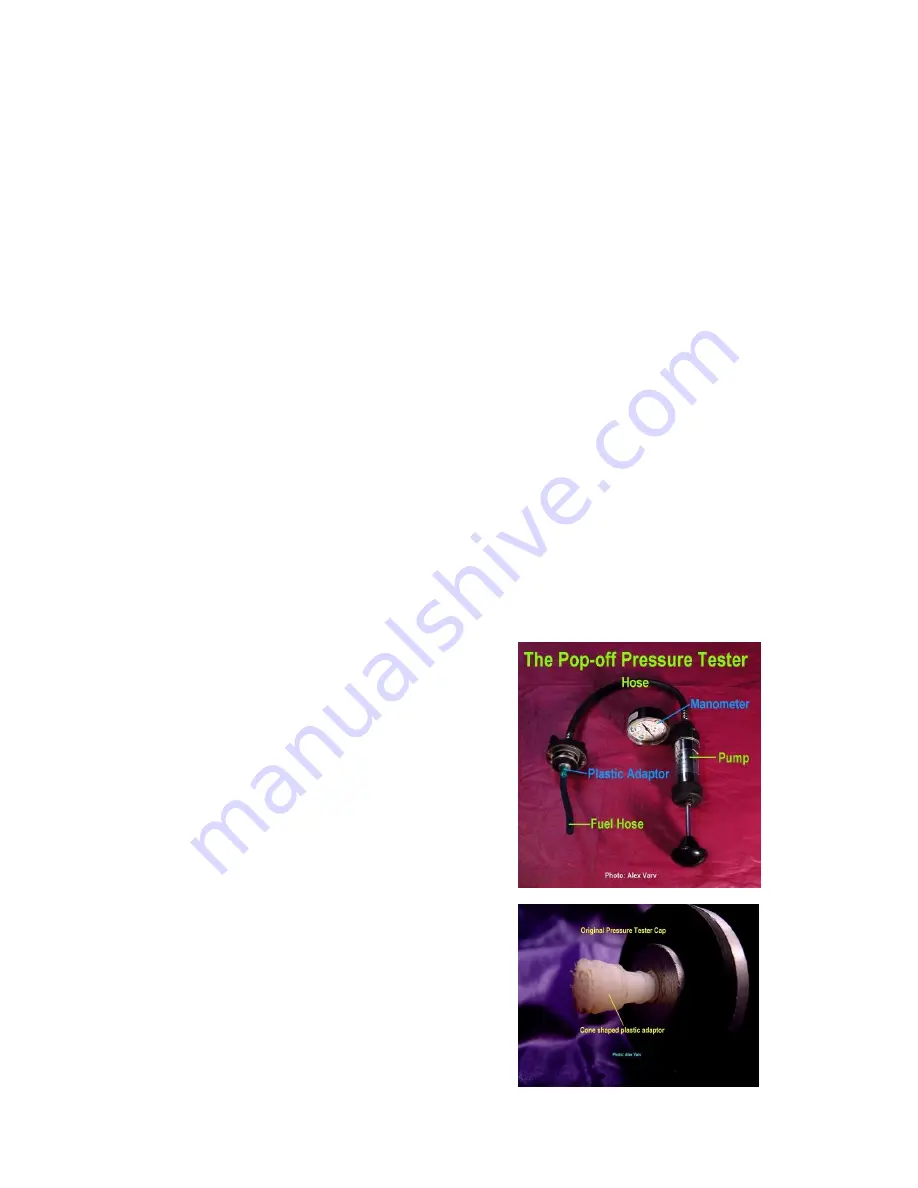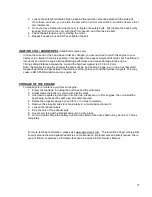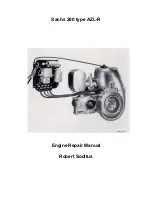
13
b) Vapor lock in the fuel line especially in the areas that the fuel line makes a loop. Fuel will flow
smoothly and evenly with a straight path to the carburetor from the fuel tank. Additional bends / loops will
only impede the fuel from being drawn to the carburetor.
d) Vapor lock caused by a T line for the small primer bulb. T lines should NOT be put on the main fuel
line. If you have a small primer bulb, the bulb should draw fuel directly from the tank.
e) Vapor lock caused by a partially stuck open needle valve after the motor is shut down. Some fuel
siphons back to the tank after engine shut down. An in-tank fuel filter with a check valve will help prevent
this from happening. In addition, the needle valve must be tight in its seat
f) Vapor lock caused by inappropriate securing of the fuel line. Excessive vibrations in the fuel line may
cause the gas to evaporate in the line and cause a vapor lock.
g) Vapor lock caused by a too big fuel filter or fuel filter is improperly installed (horizontal). Fuel filters
should be installed in a vertical position
Adjusting the carburetor Pop Off Pressure
by Alex Varv
Many carburetor problems can be attributed directly to an incorrect pop-off pressure.
In order to function properly, any membrane carburetor needs a well set pop-off pressure.
The pop-off pressure is the pressure at which the needle valve will open thus letting the fuel to enter the
metering chamber. HI and LO screws do control the mixture of fuel and air, but if the pop-off pressure is
also a key factor. Set too high, it can lead to fuel starvation especially at high RPM. Such a situation will
cause engine overheating and possibly lead to an engine seizure. Set too low, the carburetor will have a
flooding tendency especially at low and mid RPM. It can also cause difficulties in restarting a warm
engine.
The pop off pressure can greatly vary between each manufactured carburetor.
The Cors-Air engine works best with the pressure not between 10 and 11psi. This value is just a general
guide. Altitude, temperature and other specific factors (airbox or air filter) can affect carburetor
performance. However the above values will satisfy the average pilot.
A simple but very accurate gauge can be
constructed using an automotive cooling system
pressure tester found in most automotive supply
stores. Additionally, some stores allow renting
of pressure testers that can easily be fitted with
a small piece of fuel hose to make a connection
to the carburetor.
To build your pressure tester you simply need to
add a plastic adapter and a short length of fuel
hose to connect the pressure tester to the
carburetor.
The plastic adaptor is conical and was sealed in
the cap with Locktite.







































